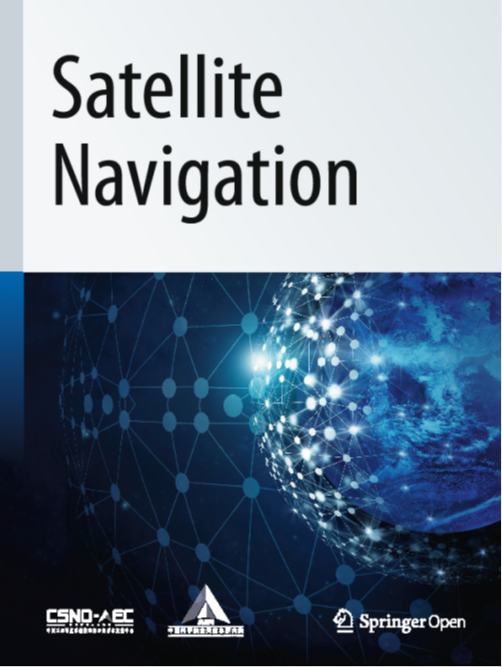利用伽利略、格罗纳斯和北斗卫星的卫星激光测距确定全球大地参数
IF 10.1
1区 地球科学
Q1 ENGINEERING, AEROSPACE
引用次数: 0
摘要
新型全球导航卫星系统(GNSS)卫星,包括格洛纳斯(GLONASS)、伽利略(Galileo)和北斗(BeiDou)系统,都配备了激光反向反射阵列(LRA),以支持卫星激光测距(SLR)跟踪,这有助于估算全球大地参数。在本研究中,我们利用对全球导航卫星系统卫星的激光反向反射观测来估算全球大地测量参数,并研究了不同数据处理策略对估算的地球自转参数、地心运动和地面尺度的影响。结果表明,为每对卫星站设置测距偏差参数可以有效地解释 LRA 引起的卫星特定偏差,从而使拟合后 SLR 残差的均方根误差(RMSE)更小。此外,对每个卫星站对的测距偏差进行估计可提高估计站点坐标和 ERP 的精度。我们还研究了不同弧长对估计 ERP、地心运动和地面尺度的影响。结果表明,延长弧长可以显著减少 ERP 的形式误差。7 天策略产生的最小均方根误差分别为:极坐标 X 分量估计值 473 微微弧秒,Y 分量估计值 495 微微弧秒,日长估计值 52 微微弧秒。然而,估计的地心运动受弧长的影响较小,即使是最短的 1 天弧策略也能捕捉到地心运动在 Z 分量上的季节性变化。在比例尺估算方面,延长弧长可以显著提高估算的台站坐标和比例尺的精度,但弧长越长,这种优势就越不明显。与 ITRF2014 相比,7 天方案也获得了较接近的比例尺结果,均方根误差为 2.10 × 10-9。本文章由计算机程序翻译,如有差异,请以英文原文为准。
Determination of global geodetic parameters using satellite laser ranging to Galileo, GLONASS, and BeiDou satellites
The new Global Navigation Satellite System (GNSS) satellites, including GLONASS, Galileo, and BeiDou system, are equipped with Laser Retroreflector Arrays (LRA) to support Satellite Laser Ranging (SLR) tracking, which contributes to the estimation of global geodetic parameters. In this study, we estimate the global geodetic parameters using the SLR observations to GNSS satellites and also investigate the effects of different data processing strategies on the estimated Earth Rotation Parameters (ERP), geocenter motion, and terrestrial scale. The results indicate that setting range bias parameters for each satellite-station pair can effectively account for the satellite-specific biases induced by LRAs, leading to smaller Root Mean Square Errors (RMSE) of the post-fit SLR residuals. Furthermore, estimating the range biases for each satellite-station pair improves the accuracy of the estimated station coordinates and ERP. We also examine the impact of different arc lengths on the estimates of ERP, geocenter motion, and terrestrial scale. The results show that extending arc length can significantly reduce the formal error of ERP. The 7-day strategy produces the smallest RMSEs of 473 microarcseconds and 495 microarcseconds for the estimated X- and Y-component of pole coordinates, and 52 microseconds for length-of-day, respectively. However, the estimated geocenter motion is less affected by the arc length, even the shortest 1-day arc strategy can capture the seasonal variations of geocenter motion in Z component. For scale estimation, extending the arc length notably improves the accuracy of the estimated station coordinates and scale, but this advantage becomes less noticeable in longer arcs. The 7-day solution also obtains the closet scale results compared to ITRF2014, with the RMSE of 2.10 × 10–9.
求助全文
通过发布文献求助,成功后即可免费获取论文全文。
去求助
来源期刊

Satellite Navigation
Multiple-
CiteScore
19.40
自引率
6.20%
发文量
25
审稿时长
12 weeks
期刊介绍:
Satellite Navigation is dedicated to presenting innovative ideas, new findings, and advancements in the theoretical techniques and applications of satellite navigation. The journal actively invites original articles, reviews, and commentaries to contribute to the exploration and dissemination of knowledge in this field.
 求助内容:
求助内容: 应助结果提醒方式:
应助结果提醒方式:


